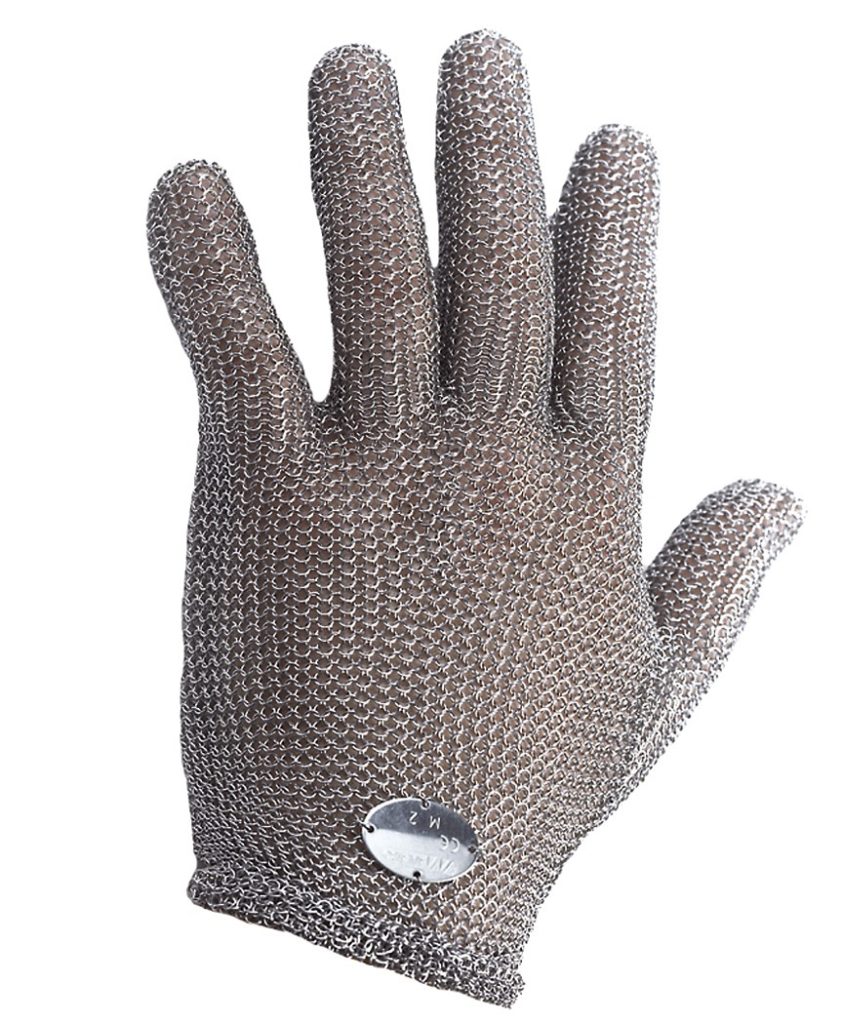In this post I will discuss “Uncoated” Cut Resistant Gloves. I think it is important to distinguish uncoated cut resistant gloves from coated cut resistant gloves for several reasons. I’ll cover the differences as I discuss the features.
Although you can conclude from my previous discussions that I’m a big fan of coated cut resistant gloves, uncoated models are very appropriate for many uses and indications requiring safety cut resistant situations.
Largest demand for uncoated cut resistant gloves:
The largest demand for uncoated cut resistant gloves is in the food service industry where the need for enhanced gripping is not required. I know many of you will initially think the need for grip is needed due to the sharp knives used but this is not the case. For those of you familiar with the food industry and particularly butchers, you will always see a butcher wearing only “one” glove. These gloves are always cut resistant models. The hand usually without a glove is referred to as the knife hand which meat and poultry cutters prefer in order to maintain better control of the knives. As you can imagine, gloves can diminish the intricate control of the knife and this hand does not need any cut protection. On the other hand, the actual piece of food does not require any special gripping. This hand only requires the use of a disposable glove to protect from any cross-contamination from someone’s hand.
Uncoated Cut Resistant gloves are not limited to the food service industry by any means. They are widely popular in uses such as the fishing industry, oyster shucking, sheet metal handling, canning, and other industrial applications. Uncoated cut resistant gloves are normally easier to clean and sterilize and are not prone to breakdown due to harsh chemicals.
Uncoated Cut Resistant Gloves are ambidextrous:
Another interesting aspect of uncoated cut resistant gloves is that they are ambidextrous meaning they can be worn on either hand. This cannot be accomplished with a coated cut resistant glove due to the coating on one side or the palm side.
This ambidextrous feature can also extend the wear life of the gloves which can also reduce costs.
ANSI Cut Level of Uncoated Gloves
You will find that uncoated cut resistant gloves come in all levels of cut resistance. To save reading time and repetition on this topic, you can find other references on this issue in other posts. Just type in ANSI Cut Level in the search area of this blog and you will find plenty of references on this issue.
Uncoated Cut Resistant Glove Fibers:
You will find the same type of fibers in both the coated cut resistant gloves as well as the uncoated models. However, you will find a few antimicrobial uncoated models that use a special blended antimicrobial fiber with the cut resistant fiber. This feature is easier to accomplish with uncoated models since coatings are difficult to be made antimicrobial and coatings can also block the antimicrobial feature of the fiber in the gloves.
Pricing:
You will not find any significant difference in prices verses the coated and uncoated models. Pricing is largely reflected by the fiber used and since both types use the same fibers, pricing will be similar. The coatings themselves are fairly inexpensive and are applied using machines.
Examples of Various Uncoated Cut Resistant Gloves:
Below are a few examples of our most popular uncoated cut resistant gloves. I am not going to bore you by listing all of these uncoated cut resistant gloves here in this post, so I think listing the most popular is a better approach. You will find a link to all of our cut resistant gloves below if needed.
Also, I will only include a few important bullet points with each example and you can review a more detailed description by clicking on the links.
Please note that the examples listed are approved for direct and indirect food handling.
Wells Lamont Whizard Stainless Steel Metal Mesh Gloves
Micro-plasma welded 4 mm rings have no gaps to trap soil that can feed bacterial growth.
- Ambidextrous
- Available in 3 Wrist Lengths and 7 sizes for men and women.
____________________________________________________
Kut Gard Dyneema Antimicrobial Cut Resistant Gloves
- Antimicrobial Fiber
- Ambidextrous
- 13 Gauge Seamless Thin Knit
- ANSI Cut Level 5
____________________________________________________
Kut Gard Dyneema/Lycra Seamless Knit Cut Resistant Gloves
- Ambidextrous
- Softer and more flexible 13 Gauge Seamless Thin Knit
- ANSI Cut Level 2
Thank you for subscribing.
The Glove Guru – Joe McGarry



